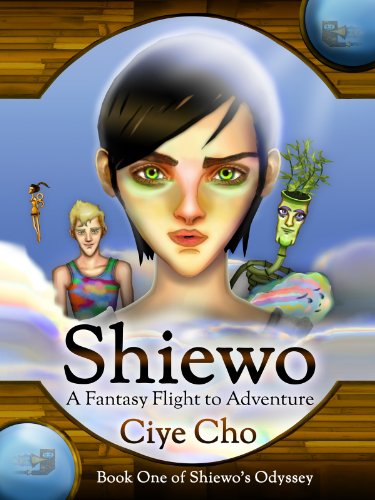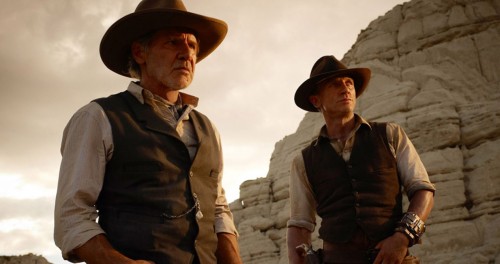A final destination that never seems to get to its destination...hmm....your in for a real treat this time. Final Destination 5 may be the last installment in the brand name but its proved time and time again "you can hide but you can't cheat death forever"...pretty don't you think?
The basic setup is again the same this time as well - Each installment begins with an enormous action set-piece (in this case, a suspension bridge collapse) that kills off character after character in a variety of shocking and grisly ways -- until the entire sequence is revealed to be a premonition. Final Destination 5 centers around Sam Lawton (Nicholas D’Agosto) who, after a brief moment of deja vu, remembers his gruesome vision and drags several of his co-workers off the aforementioned bridge before the collapse -- subsequently saving them from their pre-ordained deaths. As a result, “Death,” who does not like to be cheated, spends the remainder of the film hunting the survivors one by one -- using a string of complicated real-world setups to reclaim their lives.
But what is different this time? The success of the film owes a lot to director Steven Quale’s use of 3D. Final Destination 5 often catches the audience off-guard, and plays against expectations through its use of 3D. Obviously, things fly out of the screen, but this isn’t a film that’s attempting to create a rich and immersive experience -- it’s about toying with anticipation as well as delivering cathartic, over-the-top pay-offs. Most audience members are burning out on run of the mill 3D, but even naysayers will have to admit that Final Destination 5 makes interesting (and at times cringe-inducing) use of the format.
But its not only the 3D that makes a difference here but the different solutions of "toying with death". Previous installments had rather well humongous ways of cheating the star of the show a.k.a. "Death" - cheating death again, new life, etc. However, Final Destination 5, to its credit, offers a more straightforward solution -- the survivors can kill another person to appease death -- which not only makes more sense than prior films, but also drives the plot and characters forward in compelling and twisted ways. It’s a subtle addition that (surprisingly) isn’t a major focus of the story -- but adds an interesting dynamic as well as a few extra surprises by the end.
The basic setup is again the same this time as well - Each installment begins with an enormous action set-piece (in this case, a suspension bridge collapse) that kills off character after character in a variety of shocking and grisly ways -- until the entire sequence is revealed to be a premonition. Final Destination 5 centers around Sam Lawton (Nicholas D’Agosto) who, after a brief moment of deja vu, remembers his gruesome vision and drags several of his co-workers off the aforementioned bridge before the collapse -- subsequently saving them from their pre-ordained deaths. As a result, “Death,” who does not like to be cheated, spends the remainder of the film hunting the survivors one by one -- using a string of complicated real-world setups to reclaim their lives.
But what is different this time? The success of the film owes a lot to director Steven Quale’s use of 3D. Final Destination 5 often catches the audience off-guard, and plays against expectations through its use of 3D. Obviously, things fly out of the screen, but this isn’t a film that’s attempting to create a rich and immersive experience -- it’s about toying with anticipation as well as delivering cathartic, over-the-top pay-offs. Most audience members are burning out on run of the mill 3D, but even naysayers will have to admit that Final Destination 5 makes interesting (and at times cringe-inducing) use of the format.
But its not only the 3D that makes a difference here but the different solutions of "toying with death". Previous installments had rather well humongous ways of cheating the star of the show a.k.a. "Death" - cheating death again, new life, etc. However, Final Destination 5, to its credit, offers a more straightforward solution -- the survivors can kill another person to appease death -- which not only makes more sense than prior films, but also drives the plot and characters forward in compelling and twisted ways. It’s a subtle addition that (surprisingly) isn’t a major focus of the story -- but adds an interesting dynamic as well as a few extra surprises by the end.
Speaking of beginnings, the opening set piece of the bridge collapse left me giddy. Every cast member seems to meet a vastly different demise with Candice taking the top award, something she manages to do once more. They are grisly and the sequence throws smart and interesting obstacles in their paths. The collapse itself feels thought out and well-researched, something a lazy sequel would never spend the time to do. The entire sequence looks gratifyingly real, but it is always risky going this far in the first quarter of a film. Outside of the bridge scene the gymnastic scene had to be the most brilliant one here. You can literally feel yourself sitting on the edge of the seat as Candice avoids one hurdle and stumbles over another. The sequence comes to an outrageously brutal demise that manages to feel rewarding in a sick way.
Both Nicholas D’Agosto and Miles Fisher (who plays Sam’s best friend, Peter), have surprisingly natural onscreen charisma -- especially given the ludicrous scenario and flat dialogue they’re expected to deliver. The rest of the cast is competent, and never really distract from the events that are unfolding -- but don’t make much of an impression, either. Most of the characters, as usual, are merely cannon fodder for the star of the film -- Death (and its creative killing methods).
On the whole Final Destination 5 is noticeably hollow without the cruel set pieces, and for that it will not reach much beyond its core audience. For those that are fans, though, there is much to be happy about, including a satisfying ending. Although the movie's logic gets a little dodgy by the closing credits (though no moreso than in prior installments) but definitely delivers some fun surprises and a number of great nods to the overarching Final Destination franchise. It’s arguably the second-best entry in the series (behind the original, of course) and should please fans as well as serve as a good re-entry point into the storyline for audience that may have passed on the last few installments.


























